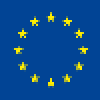The development of new magnetic and thermal sensors shares basic principles in the spintronic related to spin Hall effect/ inverse spin Hall effect (SHE/ISHE) and the spin to charge conversion science. In ULTIMATE, we propose to work with suitable hybrid nanostructures to improve further these effects.

Ultra Thin Magneto Thermal Sensoring
Image caption: Logo of the ULTIMATE-I project.
Summary: The development of new magnetic and thermal sensors shares basic principles in the spintronic related to spin Hall effect/ inverse spin Hall effect (SHE/ISHE) and the spin to charge conversion science. In ULTIMATE, we propose to work with suitable hybrid nanostructures to improve further these effects. By studying hybrid nanostructured materials in which the mentioned properties are better performed, will pave a way to improve the Spin Hall magnetoresistance-based magnetic sensor and spin Seebeck effect-based temperature sensor.
We have divide the strategy program into two big steps: i) From basic knowledge searching new and better materials to perform spin Hall magnetoresistance (SMR) and spin Seebeck effect (SSE); and careful study of interfaces and nanostructuration that inherently could alter the magnetism and the spin transport, since magnetism is based on strong short-range correlation between electronic spin and orbital degrees of freedom; and ii) From development and application at first approximation of new materials to new designs of SSE temperature- and SMR magnetic- sensor.
The ULTIMATE project involves sixteen partners, eight beneficiaries from EU members and Associate country: Spain (UNIZAR-Zaragoza, ICN2-Barcelona, nanoGUNE-San Sebastian), France (CNRS-UMR137 Paris and UMR 7158 Nancy, Lorraine Université UL-Nancy), Serbia (Company: Senzor infiz d.o.o-Belgrade) and 8 partners from Third Countries: Argentina (CNEA- Bariloche and Buenos Aires, CONICET), Brazil (UFPE-Pernambuco), Chile (UTFSM -Valparaiso), Perú ( UNMSM-Lima), USA (NYU-New York).
The consortium is composed by 6 Academic institutions, 5 Research Centers and 1 Company, in total, with more than 100 researchers/technician/students/technologist participating. Collectively the project consortium will reinforce the collaboration and improve the capacities of each institution, at training researchers, postdocs, PhD students, and technicians, by interchanging knowledge, gaining new capacities of know-how and finally to strengthen connections between America (North and South) and Europe. As important as scientific exchange, the planned networking activities will include the co-supervision PhD Students between Universities in Spain-France from EU and Chile-Argentina-Peru from South America.
The Jean Lamour Institute (IJL), Nancy node, participates through its two tutelage: the University of Lorraine and the CNRS. A large number of secondments will be organized during the next four years. The IJL, and particularly the SPIN team is organized to welcome visitors.
The project link to the whole consortium is https://ultimate-i.eu/ and to the European Commission is https://cordis.europa.eu/project/id/101007825 .
Funding: 446 k€ (UL and CNRS) / Total 1656 k€
Scientific project timeline: 01/09/2021 – 31/08/2025
Next events: –The Toptronics’ PI and Ultimate’s local PI co-organized the International Workshop in Spintronics Spin Argentina to be held in Bariloche, Argentina Nov 6th -11th , 2022.
Secondments: Several secondments have been already organized up to August 2022:
1. José Luis AMPUERO, a PhD student at Balseiro Institute in Bariloche, Argentina, will spend 4 months starting April 4th, 2022. He will be trained in UV lithography to study charge-to-spin current conversion. Beside, He will perform FMR measurements at different temperatures.
2. Ana Carolina SARMIENTO CHAVEZ, a post-doc fellow at Balseiro Institute in Bariloche, Argentina, will spend 3 months starting April 3th, 2022. She will work with Prof. Michel Hehn and Daniel Lacour to study formation and manipulation of stripes magnetic domains in FePt and CoFeB thick layers.
3. Luis AVILES, a permanent CONICET researcher working at Balseiro Institute in Bariloche, Argentina, will spend 1 months starting April 1th, 2022. He will learn about charge-to-spin current conversion experiments. Particularly, spin-torque ferromagnetic resonance (STFMR).
4. Mara GRANDA, a permanent CONICET researcher working at Balseiro Institute in Bariloche, Argentina, will spend 1 months starting June 1st, 2022. She will join Mgs Demba Ba at CC-MiNaLor for the ebeam lithography to develop nanowires and nano Hall bars in manganite-based oxides.
5. J. Carlos ROJAS-SANCHEZ, the local PI, will spent 4 months at NYU in New York, USA. He will work in collaboration with Prof. Andrew Kent to study further spin-dependent phenomena.
Participants
Institut Jean Lamour (Nancy, France)
UMPhi CNRS/Thales (Palaiseau, France)
Zargoza University (Spain)
ICN2 (Barcelona, Spian)
Nanogune (San Sebastien, Spain)
Senzor Infiz (Belgrado, Serbia)
CNEA & CONICET (Buenos Aires and Bariloche, Argentina)
UFPE (Pernambuco, Brazil)
UTFSM (Valparaiso, Chile)
UNMSM (Lima, Peru)
NYU (New York, USA)
